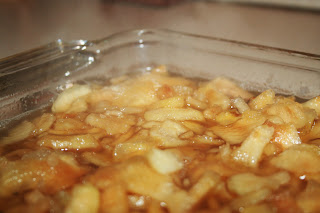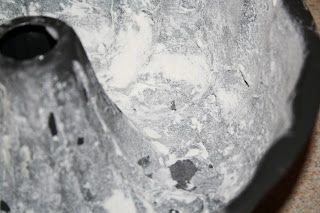The LDS Preparedness Manual is an excellent resource for self-reliance. While it has not been endorsed nor produced by the Church of Jesus Christ of Latter-day Saints, significant effort has been made to ensure that all materials are in accordance with general church guidelines on food storage and family preparedness.
You can download a copy of the manual here.
LDS Preparedness Manual Index
THINKING ABOUT GETTING STARTED
3 Preface
6 Book of Gomer Parable, Author Unknown
8 Preparing for a repeat of Haun’s Mill, By Roger K. Young
16 Preparedness Test, by One Heart Inc.
17 Deluxe 96 Hour Kit, By Glenn A. Anderson
FOOD STORAGE
20 Food Storage, by Chris Parrett
22 BARE-MINIMUM Food Storage Requirements, by Chris Parrett
23 Do you Really have a Year’s Supply??, By Chris Parrett
24 Basic Food List, Lynette B. Crockett
28 Monthly Food Storage Purchasing Calendar, by Andrea Chapman
32 The Seven Major Mistakes in Food Storage, By Vickie Tate
34 Common Storage Foods, By Alan T. Hagan
35 Grains & Flours, By Alan T. Hagan
45 Legume Varieties, By Alan T. Hagan T. Hagan
47 Availability of Grains & Legumes,, By Alan T. Hagan Alan T. Hagan
50 Moisture Content in Grains & Legumes, By Alan T. Hagan
52 Dairy Products, By Alan T. Hagan
55 Canned Fluid Milks and Cremes, Butter, Cheese, Eggs, By Alan T. Hagan
58 Sugar, Honey and Sweeteners, By Alan T. Hagan
63 Fats and Oils, By Alan T. Hagan
65 Cooking Adjuncts, By Alan T. Hagan
69 Infant Formula, By Alan T. Hagan
71 Growing and Using Sprouts, by Al Durtschi
73 Pros & Cons of Freeze-Dried, Dehydrated, MRE, etc.., by Skipper Clark
74 MREs, Meal Ready to Eat, By Alan T. Hagan
81 Storage Containers, By Alan T. Hagan
93 Oxygen Absorbers, By Alan T. Hagan
93 Moisture Control, By Alan T. Hagan
99 Spoilage, By Alan T. Hagan
105 Storage Lives of Dehydrated Food, By Al Durtschi
111 Water, by Paton Turner
124 Master Food List, by Chris Parrett
128 Master Seed List, by Chris Parrett
TEMPORAL PREPARATION
129 OK, But what do I prepare for?, by Capt. Dave
132 Surviving in the City, Edited by Chris Parrett
142 Money, Edited by Chris Parrett
145 Defence, Edited by Chris Parrett
147 Clothing, Edited by Chris Parrett
148 Emergency Heating & Cooking, by Greg Pope
150 Emergency Light, by Robert Roskind & Brandon Mansfield
158 Emergency Shelter, by Larry Bethers
159 Master Preparedness List, by Chris Parrett
173 Space Cramp, Where do I Put it all?? by Kim Hicken
175 Emergency Sanitation, by Greg Pope.
176 Emergency Toilets & Garbage Disposal, by Alan T. Hagan
178 Emergency Generators, By Steve Dunlop
184 Thoughts on Disaster Survival, post Katrina , By Anonymous
TERRORISM
193 Protecting Yourself From Terrorism, By Kenneth B. Moravec
197 Homeland Security Advisory System, By Kenneth B. Moravec
199 Preparing for a Pandemic, By Kenneth B. Moravec
200 Fact about Avian Flu, By Kenneth B. Moravec
204 Quarentine, By Kenneth B. Moravec
205 Quarentining for Epidemics, By Kenneth B. Moravec
207 Biological and Chemical Agent Dispersion, By Kenneth B. Moravec
211 Common Biological and Chemical Agents
213 Nuclear - Chemical Decontamination Kit, By Kenneth B. Moravec
215 Nuclear Disaster and Warfare, By Kenneth B. Moravec
219 What to do After a Nuclear Attack, By Kenneth B. Moravec
221 What to do Before a Nuclear Attack, By Kenneth B. Moravec
Please Note:
The contents of this booklet are intended to assist individuals and families in
coping with emergency preparations. However, final decisions on preparation
for actions taken during an emergency are the sole responsibility of individuals.
No one knows your needs or can take care of you better than you can-nor does
anyone else have that responsibility. Information and examples contained within
this booklet are provided for illustration and advice only. Therefore, no liability
is assumed by the Editor or any of the Authors for the use or misuse of any
information or products contained in this publication.
This publication has not been endorsed or produced by The Church of
Jesus Christ of Latter-day Saints, and its contents and the opinions it expresses
are those of the Editor and the separate authors.
While it should not be construed as an official church publication,
significant effort has been made to ensure that all materials are in
accordance with general church guidelines on food storage and family
preparedness. A special “LDS Authorized” edition of this book is available to Stakes and Wards
upon written request from the Stake President or Ward Bishop that contains significant additional
LDS copyrighted material not contained in this public version.
Questions, Comments or requests for additional copies of this manual
should be directed to its compiler
Brother Christopher M. Parrett, “chris@ldsavow.com”.
This manual may be freely re-printed and distributed so long as
all of the copyrights of the original authors are respected, and such reproduction is
NEVER DONE FOR COMMERCIAL GAIN!.










































